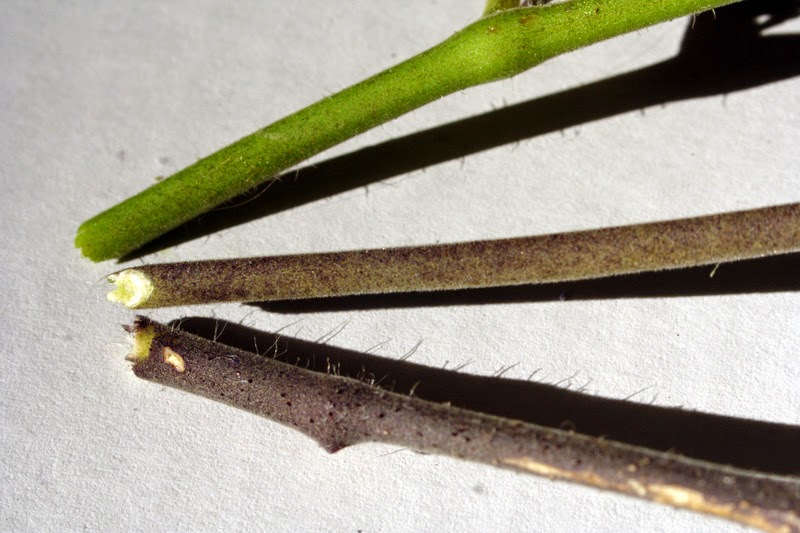Srinivasa Ramanujan posed the following puzzle to the Journal of Indian Mathematical Society in April 1911.
What is the value of the following?
\( \sqrt{1+2\sqrt{1+3\sqrt{1+4\sqrt{\cdots}}}} \)
He waited over six months, and when nobody replied he gave his solution. The result he provided was 3.
The algebraic solution provided by Ramunujan:
Consider the identity
\( (x+n)^2 = n^2 + 2nx + x^2 = n^2 + x[(x+n)+n] \)
Take square roots to get
\( [x+n] = \sqrt{n^2+x[(x+n)+n]} \)
Now inside the brackets you have (something + n), so you can
substitute in the same equation with (x+n) replacing (x) to get
substitute in the same equation with (x+n) replacing (x) to get
\( x+n = \sqrt{n^2+x\sqrt{n^2+(x+n)[(x+2n)+n]}} \)
and repeat the process to get
\( x+n = \sqrt{n^2 + x\sqrt{n^2+(x+n)\sqrt{n^2+(x+2n)\sqrt{\cdots}}}} \)
If you now set n = 1, x = 2 you get
\( 3 = \sqrt{1+2\sqrt{1+3\sqrt{1+4\sqrt{\cdots}}}} \)
An alternate way of calculating the equation reveals some interesting behavior.
\( 3 = \sqrt{1+2\sqrt{1+3\sqrt{1+4\sqrt{\cdots}}}} \)
\( 3^2 = 1+2\sqrt{1+3\sqrt{1+4\sqrt{\cdots}}} \)
\( 3^2-1= 2\sqrt{1+3\sqrt{1+4\sqrt{\cdots}}} \)
\( \frac{3^2-1}{2}= \sqrt{1+3\sqrt{1+4\sqrt{\cdots}}} \)
\( 4 = \sqrt{1+3\sqrt{1+4\sqrt{1+5\sqrt{\cdots}}}} \)
\( \vdots \)
\( n = \sqrt{1+(n-1)\sqrt{1+(n)\sqrt{1+(n+1)\sqrt{\cdots}}}} \)
The value of each sequential nested radical forms a series...
\( 3, 4, 5, 6, \cdots, \infty \)
...which is perfectly valid. If 3 was not a valid answer to the equation, then this calculation would have revealed a contradiction. Proof by contradiction is one of my favorite methods of proving.
So, what happens if we start with a different starting assumption?
\( 4 = \sqrt{1+2\sqrt{1+3\sqrt{1+4\sqrt{\cdots}}}} \)
\( \frac{3\cdot5}{2} = \sqrt{1+3\sqrt{1+4\sqrt{1+5\sqrt{\cdots}}}} \)
\( \frac{13\cdot17}{2^{2}3} = \sqrt{1+4\sqrt{1+5\sqrt{1+6\sqrt{\cdots}}}} \)
\( \frac{11\cdot19\cdot223}{2^{6}3^{2}} = \sqrt{1+5\sqrt{1+6\sqrt{1+7\sqrt{\cdots}}}} \)
\( \frac{17\cdot27902701}{2^{12}3^{4}} = \sqrt{1+6\sqrt{1+7\sqrt{1+8\sqrt{\cdots}}}} \)
\( \frac{17\cdot27902701}{2^{12}3^{4}} = \sqrt{1+6\sqrt{1+7\sqrt{1+8\sqrt{\cdots}}}} \)
\( \vdots \)
The value of each sequential radical forms another series.
\( 4, 7.5, 18.41\bar6, 84.543402\bar7, 1429.71739065, \cdots, \infty \)
It is harder to predict subsequent entries of the series than for the original series, but no less valid. I've put some effort into constructing an algebraic function that also produces this series, but have set aside the challenge for now.
So, let's try another starting assumption.
\( 2 = \sqrt{1+2\sqrt{1+3\sqrt{1+4\sqrt{\cdots}}}} \)
The value of each sequential radical forms a third series...
\( 2, 1.5, 0.41\bar6, -0.206597\bar2, -0.191463517554, \cdots, -\infty \)
...which is not valid under the convention that a radical can't have a negative value.
Generalizing this computation method, Ramanujan's Nested Radical has an infinite number of valid answers...
\( 3 \ge \sqrt{1+2\sqrt{1+3\sqrt{1+4\sqrt{\cdots}}}} \)
Every starting value greater than 3 results in a series of radical values that increase at more than 1 per step and increase to positive infinity. Every starting value less than 3 results in a series of radical values that increases at less than 1 per step and eventually turns negative. I don't yet know how to prove this general statement, but the pattern holds. The system behaves very simply when the starting value is 3, more than 3, or less than 3.
Ramanujan's solution to his puzzle is correct, but it is also incomplete.
The algebraic method is unable to find the full solution to the equation. Algebra doesn't effectively deal with infinites, so it shouldn't
entirely be a surprise that an algebraic intuition might make some
faulty (or at least incomplete) inferences when infinity is involved. This is interesting because it hints at the limits of algebra as a way of knowing truth. The Gödel Incompleteness Theorems discuss something similar to this and are worth reading more about.
How does this connect with biology?
One detail of my training to be a scientist is learning to look for untested assumptions in arguments that are presented to me. This was never explicitly stated in any of my graduate coursework, but it has been important to do well in the academic environment I experienced in getting my PhD. When I find such an assumption, I see it as a puzzle to be explored. Am I seeing something real? What inferences is the presenter drawing from the assumption? Why is what I'm seeing not already addressed?
What assumptions have you made today?
References:
- Ramanujan: www.thefamouspeople.com/profiles/srinivasa-ramanujan-503.php
- Algebraic solve: mathforum.org/library/drmath/view/52674.html
- Numerical solve: www.johndcook.com/blog/2013/09/13/ramanujans-nested-radical/
- Proof by contradiction: en.wikipedia.org/wiki/Proof_by_contradiction
- Incompleteness theorems: en.wikipedia.org/wiki/G%C3%B6del%27s_incompleteness_theorems































